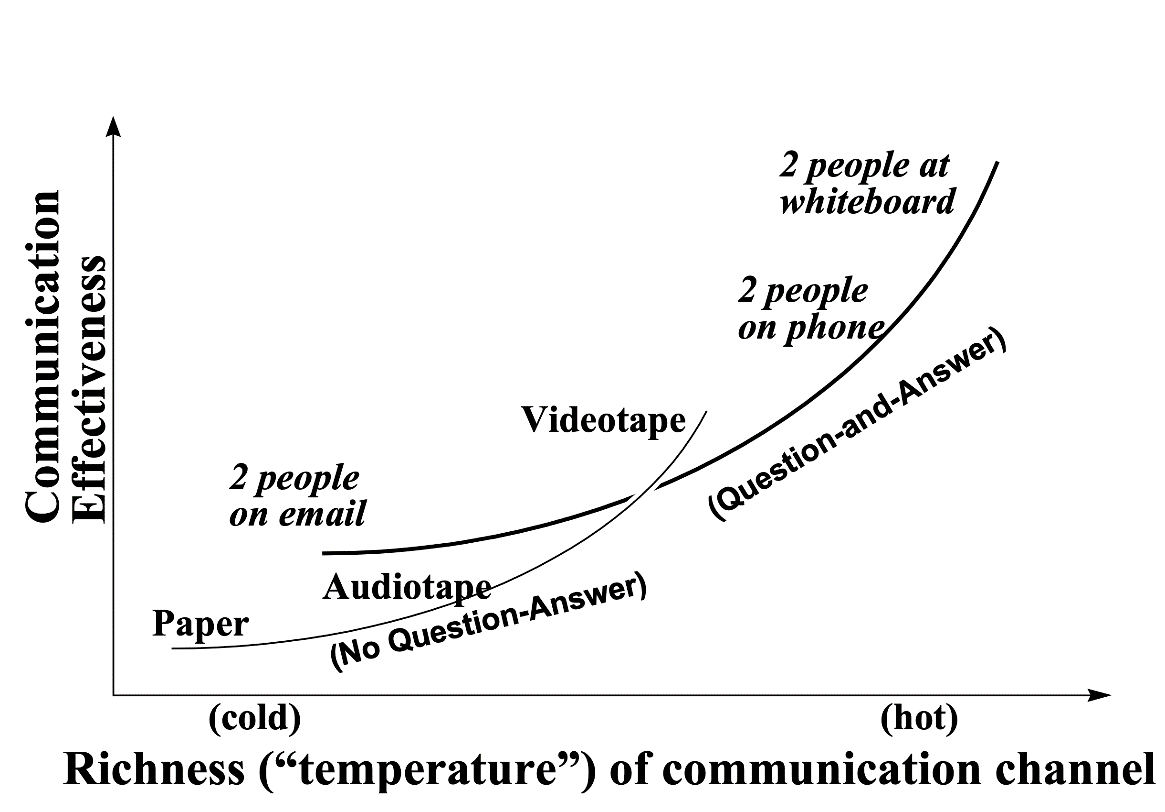Distributed Communication
Distributed teams are the norm in today's software world, and working with a geographically distributed team brings its own, peculiar demands on a Scrum Master.

Distributed teams are the norm in today's software world, and working with a geographically distributed team brings its own, peculiar demands on a Scrum Master. In every discussion about the challenges faced by a distributed team, the first topic that comes to mind is the difference in time zones that is typical of distantly distributed teams. Then, the cultural and language differences of national teams arise. However, for a Scrum Master there are many other concerns. These include how to:
- Establish effective communication channels
- Navigate among different types of physical separation
- Build one cohesive team despite separation of the team members
- Share awareness of national issues affecting team capacity
- Achieve efficiency in team operation and Scrum events
- Avoid common pitfalls of various distributed team structure
In this post I will address the first bullet above – communication channels – including some language and cultural mistakes to avoid.
Team Communication
Communication within your Scrum team must be as effortless as possible. Finding the most workable communications for your distributed team will require some judicious consideration.
Different communication channels are not equally effective. Agile thought leader Alistair Cockburn was the first to explore this topic and in 2001 published the image below illustrating a continuum from 'coldest' (Least effective) to ‘hottest’ (Most effective) forms of communication. (Yes, in two decades the technologies have changed, but the challenges have not.) I continually keep this gradient of value in mind as I work with my developers, who often lean in the ‘cold’ direction.

Detailed, highly precise documentation is on the coldest edge of the communication spectrum. Documentation is one-sided and non-interactive, the reader cannot ask immediate questions or obtain clarification on interpretation, and it resists change because of the sunk cost invested in producing the document.
On the opposite end of this spectrum we encounter face-to-face interaction which is real-time and bi-directional, has no sunk costs, and is inherently malleable so there is no barrier to building new ideas during a discussion.
In some circumstances there is no option for face to face, or other 'warm' communication channels. So you need the best tools and consistent protocols to minimize the impediments that physical separation can create. Wherever your team falls on this graph there should be a commitment to continually move toward the highest-fidelity communication channels.
Your team cannot be efficient if they use different tools, or tools that introduce wasteful delay. Similarly, effective interaction among team members will be impaired by distribution, but is still possible with the right collaboration tools. Collaboration tools are mandatory on every distributed team. Your company has probably already established approved communication tools for both text and video collaboration, such as Microsoft Outlook, Microsoft Teams, Skype for Business, Slack, WebEx, GoToMeeting, and others. Evaluate and standardize on the right tools within your team.
Native Language
Perhaps not everyone on your Scrum team shares the same language—that is, the same 'first' language. In companies based in the United States it is not unreasonable to assume that English is the language of discourse for the domestic team. But the remote sub-team members may have a different native, or first, language even if your team events are conducted in English.
But even when everyone is speaking English, not everyone is speaking the same English. As a Shepherd you must guide your whole team on the words and phrases they use.
Choose your words carefully for those who have a different native language. Recognize it might be helpful if you speak a bit more clearly. Since the listener may be too shy or embarrassed to say, "I do not understand what you said," use the simplest words that convey your meaning. For example, I should use 'improve' rather than 'ameliorate,' which might be an unfamiliar word to some team members. I should use 'reduce' rather than 'attenuate'. This is an area that just requires some consideration.
Native colloquialisms and slang are often quite opaque to people from different countries or cultures. When I worked with a team member from England, he often threw in phrases I had never heard before, and sometimes I was not quite sure what he was saying. George Bernard Shaw was quite right when he stated, "Americans and the British are two peoples separated by a common language"—but there is a lot that is not common between American English and British English.
Slang and regional phrases can introduce misunderstanding that may not be recognized. Help your team members minimize these. My English colleague used the phrase "playing ducks and drakes" in reference to a company policy. Then he had to explain to me that this meant he saw the policy as a reckless waste of money. I would never have figured that out on my own.
Here in the Southern U.S. it is common to hear localisms such as, "That dog won't hunt," to convey that an argument failed to be convincing, and we certainly dole out lots of "You alls" and "Y'alls.” We tend to speak a bit more slowly than Northerners, which is a benefit to my Ukrainian and Indian team members who can more easily process what we say. Conversely, sometimes we native English speakers in the U.S. have to focus intensely to understand some of their dialects and enunciations. It's all part of working in a multi-cultural, multi-national industry, and sensitivity must be exercised in both directions.
Difficult communication becomes non-communication. One of my colleagues made an astute observation when he said, "I only get worried when the developers stop talking. Then they will start making things up." As an effective Scrum Master you heed this warning and listen for the silence of your team. When your Slack or Microsoft Teams channel is not scrolling, this is a symptom of withdrawal. As a Diagnostician you must study the trend of decreasing communication and analyze for the root causes. A team that is not communicating is just an assembly of isolated individuals.
I love working with teams and executives to find effective solutions. Email me at gary@effectivescrummaster.com and let's explore how we might partner on your challenges.





